Meeting the energy and climate challenge in Europe : 5 think tanks’ proposals
Summary
This report is the result of a cooperation between five French and European think tanks. Initially published in French in May 2019, its purpose was to inform debate prior to the European elections. With the new European Commission taking office, it is now translated and published in English, to provide new insights and proposals to be implemented in the next 5 years as part of the “Green Deal” promised by its new President Ursula von der Leyen.
This compilation is not meant to be exhaustive: we focus above all on certain key aspects of European energy and climate change policies. The conclusions presented in this paper are those of the authors.
The necessity of energy transition and the fight against climate change becomes more pressing every day. Almost four years after the signing of the Paris Climate Agreement, the European Union must quickly revise its targets upwards in the fight against climate change if it wishes to maintain its leadership role on climate and encourage other countries to do the same.
To have a chance of limiting climate change to an increase of 1.5°C or 2°C, much remains be done, and action at European Union level is essential. The transformation of the financial system, rules for international trade, industrial practices, and the establishment of standards for low-carbon technologies are all challenges that must be faced at a continental scale, if we are to change the course of our destiny as a planet.
The European Union is not starting from scratch. It is in the process of achieving its objectives for the reduction of greenhouse gas emissions for 2020. It plays a decisive role on the international stage and has set ambitious climate objectives when compared to other regions of the world, but which are now insufficient given the magnitude of the task to be accomplished. A roadmap was set out in the “Strategic Vision” published in November 2018 by the European Commission with a view to achieving climate neutrality by 2050 across the European Union (reducing greenhouse gas emissions to a minimum and compensating for the residual emissions with the capture of the same quantity of emissions). Accomplishing this requires the immediate acceleration of transformations in all sectors of the economy: construction, transport, industry, energy production and agriculture.
As the objectives and, with them, the magnitude of the transformations to be carried out increase, new challenges emerge. The ways of reducing emissions applied so far (such as launching the development of electricity production from renewable energy sources) have been the simplest and most acceptable. The European Union now has to make more difficult strategic choices. The necessary conversion of high fossil fuel consumption economic sectors raises both social and territorial issues. The effects of policies encouraging energy transition, whose costs and benefits are not necessarily evenly distributed, can highlight persistent social inequalities.
Asymmetrical treatment between economic sectors, or between industries and households, may be the subject of criticism and fuel the rejection of transition policies that are nevertheless necessary to preserve the climate and improve the well-being of European citizens and future generations. The absence of European harmonization must not serve as a pretext for inaction. The Union can, through concerted action, enable the essential changes for the transition to carbon-free electricity production, cleaner transport (taxation of air transport and connections between railway and charging infrastructures), the integration of climate change into trade policy, and a shift from “brown” to “green” financial investment.
Energy transition also challenges the ability of European institutions to act on Meeting the energy and climate challenge in Europe: 5 think tanks’ proposals citizens’ practical concerns: can they help them to reduce their carbon footprint on a daily basis, to travel and to heat their households in different ways, while at the same time putting an end to energy poverty? Can the European Union of major infrastructure projects become – with its structural funds and the European Investment Bank (EIB), etc… – a channel for financing the energy renovation of housing and everyday carbon-free transport? The insufficient coordination of national energy policies in an energy system that is nonetheless physically and economically interconnected also underlines the fact that further debate is sorely needed on the linking of European, national and local policies. Without a coordinated effort, the cost of energy transition and risks in terms of the security of the supply can only increase. Energy transition also poses the challenge of linking the energy system’s trajectory with that of the agricultural sector and the use of land, into which biodiversity and soil health issues must be integrated in the same way as those relating to climate preservation.
Finally, climate change raises the question of Europe’s role on the world stage: can it lead other countries and regions by example? Should it adopt firmer positions regarding access to its common market, at the risk of triggering potentially counterproductive protectionist measures?
The challenge of climate change and energy transition thus echo many of the fundamental issues at the heart of the European project. In response, our think tanks joined forces to identify concrete proposals in key fields of action: the governance of European energy and climate policy; the greening of finance and the European budget; instruments to encourage social justice and innovation; trade policy; and, finally, the decarbonization of the electricity sector.
Our belief is that this is now an urgent matter: in order not to become locked into choices that are incompatible with climate and environmental preservation and be capable of meeting the challenges ahead, the 2019-2024 European Commission and Parliament need to instigate profound and irreversible changes. The time has come to act decisively and without delay with all available means!
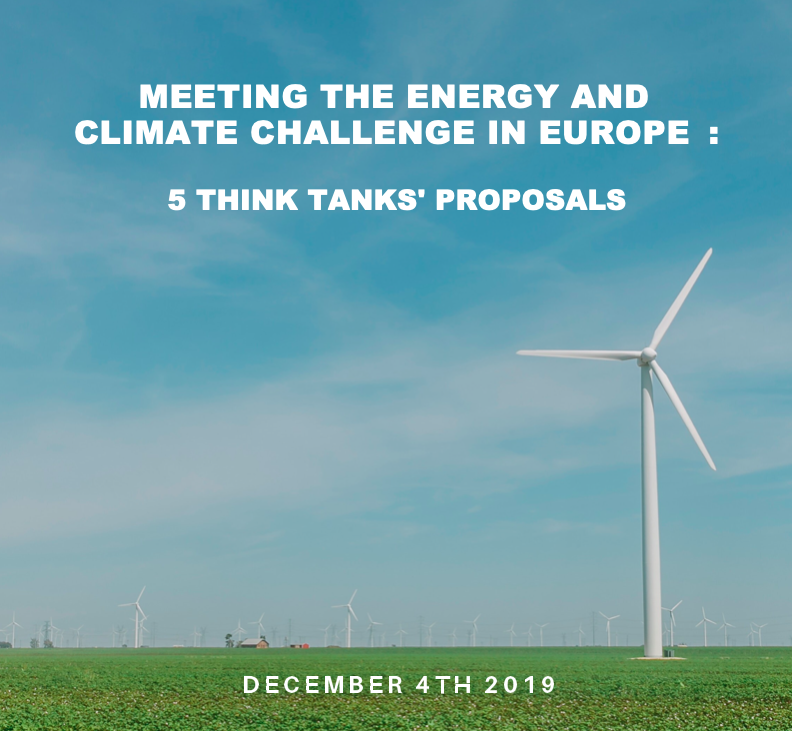
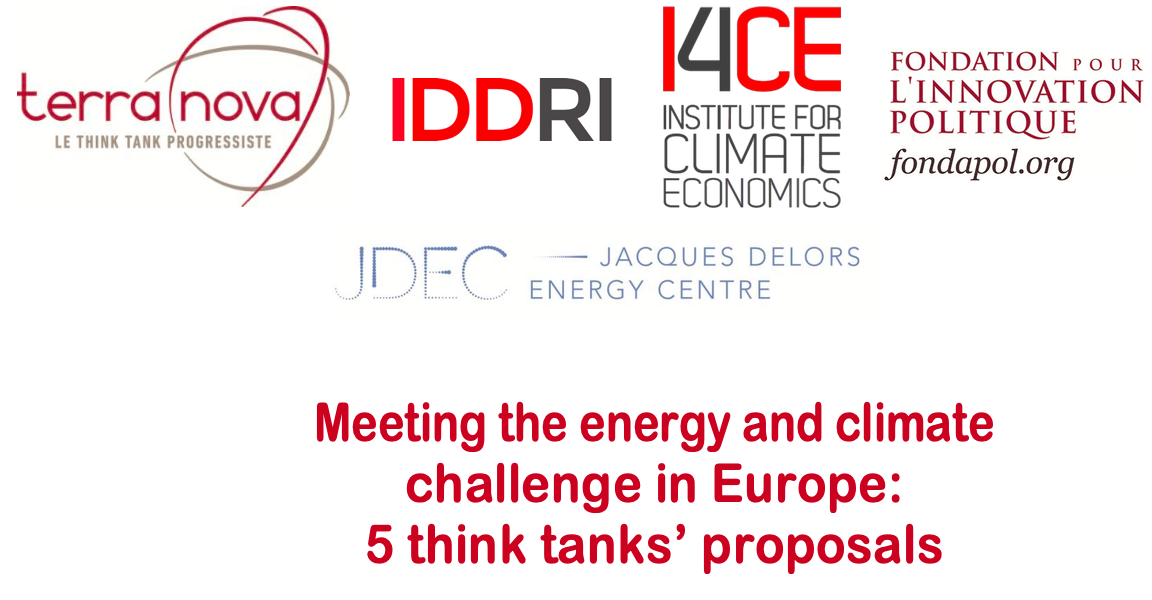
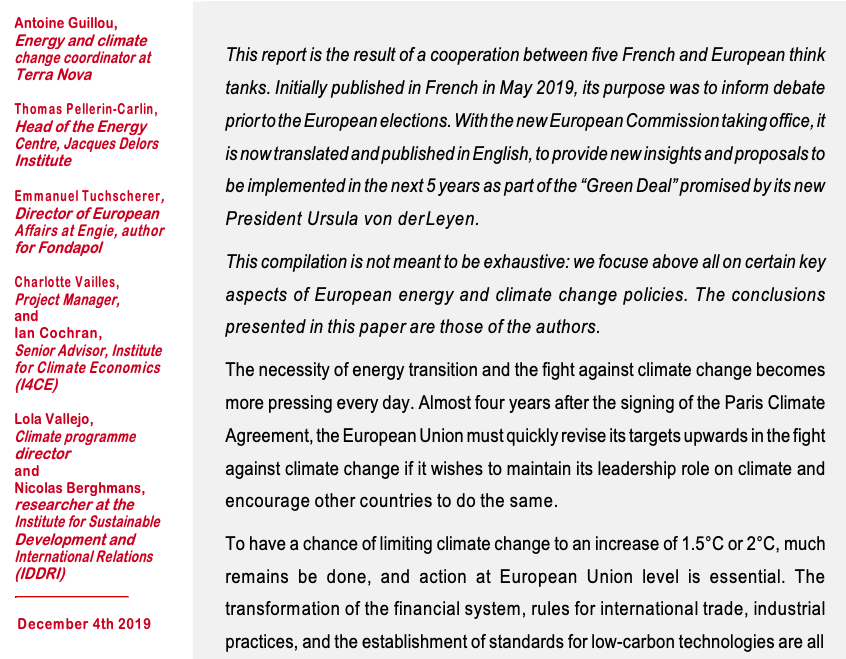
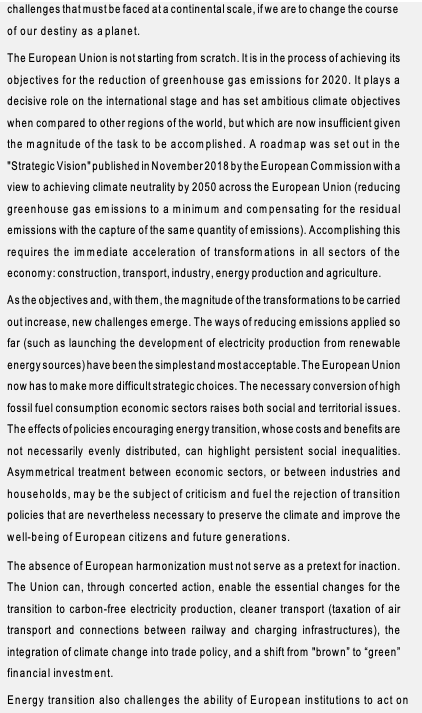
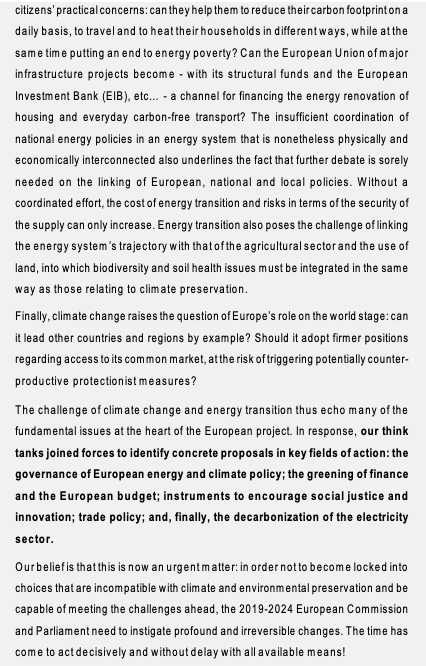

This text is adapted from the report prepared in the context of the “Think 2030” initiative: Duwe, M., Vallejo, L. (2018) “Think 2050, Act 2020: “Bringing European ambition and policies in line with the Paris Agreement”.
The current NDC commits the EU to reducing its domestic GHG emissions by “at least 40%” by 2030.
Lola Vallejo, Climate programme director, and Nicolas Berghmans, researcher1
Tackling climate change requires nothing less than a fundamental transformation of human societies and economic systems over the coming decades. A key challenge for current decision makers is the reconciling short-term policies and measures with long-term climate goals. Long-term vision and short-term actions are mutually reinforcing if they are consistent: decarbonization can be triggered by choices made today and long-term vision may not only reveal the best actions to be taken now but also galvanize stakeholder support across all sectors of society. The Paris Agreement reaffirms this by introducing two governance “vehicles” to steer countries towards the collective goal of limiting global warming to well below 2°C : national long-term strategies (Art. 4.19) and the short to mid term “nationally determined contributions”, or NDCs (Art. 4.2). The European Union (EU) has taken up both of these: having submitted its joint contribution prior to the adoption of the Paris Agreement in 20152, the European Commission unveiled its strategic vision in November 2018 for a climate-neutral economy by 2050 and may on this basis revise its contribution to the Paris Agreement by 2020. As it stands, following the adoption of the “Clean Energy for all Europeans” legislative package, many key elements regarding governance and goals have already been enshrined into law. Such an explicit link between short-term action and long-term goals is a new approach for the EU, and its success will depend on the manner in which four key challenges are faced in the context of the EU’s energy governance. To succeed with the necessary transformations, the EU must both “think 2050” and “act now”.
Neither the current EU goals in terms of climate change for 2030, nor those for 2050, correspond to the Paris Agreement objectives. The EU’s climate targets for 2050 need to be updated. To achieve this, member states can follow the “strategic vision for a climate-neutral economy” published by the European Commission at the end of 2018, in particular the two trajectories for limiting warming to 1.5°C and reaching climate neutrality by 2050. Furthermore, the EU is not yet on track to achieve its 2030 objectives. Progress remains particularly slow in certain key economic sectors that have not yet committed to significant reductions in their emissions (such as agriculture, transport and construction).
The current decision system, particularly with regard to the effort-sharing between EU member states, is not the most conducive to enhancing collective ambition. Adverse incentive structures, a focus on the next ten years without considering the long term and the lack of an adequate reward system for more ambitious member states have undermined the overall effectiveness of the EU’s climate and energy policy. Europe’s climate governance architecture should be strengthened to incentivize the best possible performance.

The European Commission in its strategic vision published on 28 November 2018 and the European Parliament in a resolution on 14 March 2019 have already given support to achieving climate neutrality by 2050. On 20 June 2019, the Council failed to agree on a precise timescale to reach climate neutrality after the opposition of four Member States (Czech Republic, Estonia, Hungary and Poland).
This includes 1) the clear adoption by all of the Union’s institutions and in particular by the EU Council3 of the 2050 Vision for a climate-neutral economy prepared by the Commission in its most ambitious form 2) the revision by 2020 of the EU’s contribution to reflect this long-term strategy 3) the definition of a process to develop a new EU contribution by 2025 based on the long term and linked to the revision process of member states’ National Energy and Climate Plans (NECPs) and finally 4) the alignment of the EU’s climate strategy with United Nations Sustainable Development Goals (SDGs).
There is a lack of dialogue between entities, in both the public and private domain, at the different levels of implementation. The long-term success of the EU’s climate and energy policy largely depends on their ownership by all stakeholders and political parties. Stakeholders must be involved from the beginning and on a continuous basis, through a transparent approach suited to geographic and sectoral characteristics, to ensure that everyone is committed to the collective vision for decarbonization. A permanent dialogue at EU level should be established for this purpose.

For this, the EU should 1) ensure a permanent dialogue on the necessary transformations and create an inclusive process for the formulation of national strategies, 2) make climate neutrality a key strategic goal of the EU by linking the strategy with parallel political process 3) providing more support for local, regional and cross-border climate action through EU policy instruments, including through specific support for fair transitions across all territories.
Strategy development lacks a proactive, comprehensive and sustainable approach to transformations. Beyond greenhouse gas (GHG) emissions, renewable and energy efficiency targets, the EU has not yet engaged in detailed strategies for decarbonization at the sectoral level. More attention needs to be dedicated to solutions and cross-sectoral solutions.

The EU should first 1) develop an integrated industrial policy focused on strategic missions related to decarbonization, 2) adopt policies to implement them under an overarching EU- level coordination mechanism to support national actions, 3) align infrastructure policies (primarily European energy and mobility networks) and related investment funds with this long-term vision and 4) design a regulatory framework for the enhancement of natural carbon sinks and negative emission technologies.
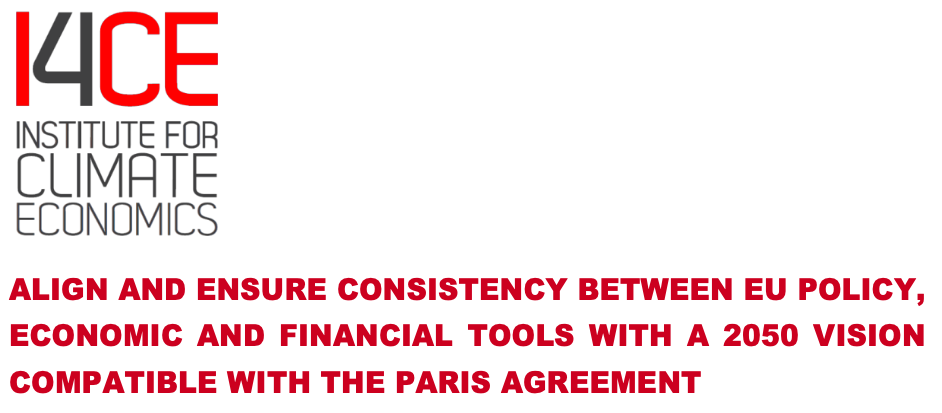
Charlotte Vailles, project manager, and Ian Cochran, Senior Advisor
To have a chance of limiting climate change to 1.5°C or 2°C, the European Union must align its policy with the Paris Agreement objectives and ensure consistency between the various policy, economic and financial tools with these long-term objectives during the 2019-2024 term. The first challenge is to adopt – as quickly as possible – a 2050 Vision which achieves climate neutrality, and then to align public policies and financial flows with this vision. In particular, it is a matter of ensuring the consistency of long-term strategies and national energy and climate plans (NECPs) developed by member states with the EU’s 2050 Vision.
- CREATE A PORTFOLIO OF AMBITIOUS PUBLIC POLICIES THAT ARE CONSISTENT WITHIN THE EU
Having adopted an EU 2050 Vision compatible with the Paris Agreement, it will be necessary to create a portfolio of ambitious public policies that are consistent within the EU, enabling it to meet its climate commitments under the Paris Agreement. On the one hand, increasing the ambition of climate policy instruments, and on the other, ensuring consistency and neutralizing the counter-productive effect of interactions between different legislative texts. The consistency of policies with the Paris Agreement objectives must be regularly assessed and the targets reviewed if they do not enable these objectives to be achieved.

The EU’s 2050 Vision should enable the definition of objectives for reductions in emissions by 2050 and 2040, in particular for sectors covered by the EU ETS (European Union Emissions Trading System). These long-term objectives will give more visibility regarding the necessary emissions reductions in different sectors. The 2050 Vision should also serve as a basis for the revision of the 2030 objectives, which can be operationalized through the revision windows offered by the regulation on the governance of the Energy Union and other review processes. In particular, the pace of reduction of the cap for EU ETS emissions could be increased during the reviews planned in the light of the implementation of the Paris Agreement, the first of which should take place by 2023.

A social value of carbon – or value for climate action, a term used in the last Quinet report establishing the social value of carbon for France – measures the value to the community of actions delivering on the climate neutrality target. Systematic use of a social value of carbon in socio-economic assessments of public policy instruments and investments would thus incentivize bold and effective climate action. More broadly, the social value of carbon could serve as a reference for all economic stakeholders. In the case of EU member states, it will be necessary to take each country’s context into account while participating in a collective ambition. That is why it would be useful to define a corridor of social values of carbon for the EU, which would include social values for each Member State. To achieve this will require the development of a common framework to determine a social value of carbon up to 2050, based on the EU’s 2050 Vision.

Counter-productive interactions exist today between some energy and climate policies, in particular between the EU ETS on the one hand, and European policies for energy efficiency and renewable energy or national policies for phasing out coal, on the other. Provisions should be introduced to assess these interactions and adjust policies to neutralize their possible counter-productive effects. For example, these adjustments could relate to the cancellation of ETS allowances corresponding to the emissions from coal-fired power stations closed by Member States. National policies for phasing out coal significantly decrease greenhouse gases emissions covered by the EU ETS, which lowers the price of allowances in the absence of an adjustment mechanism, and therefore the incentive to decarbonize for other sectors.
2. ALIGN FINANCIAL FLOWS WITH THE PARIS AGREEMENT
In parallel, sufficient funding must be available for climate investment essential to the implementation of the EU’s 2050 Vision. It is therefore necessary to ensure that financial flows are also appropriately aligned with the EU’s long-term objectives and those of the Paris Agreement. Aligning financial flows thus means that funding parties not only participate in the financing of the necessary climate transition, but also stop financing projects which “lock” the future by condemning us to emitting greenhouse gases for several decades.

The EU’s funding institutions, with the EIB in the front ranks, must play a leading role in the alignment of financial flows with the Paris Agreement objectives, as well as an incentivizing and facilitating role in the private financial sector. The EU should therefore give them a formal mandate to align all their activities with the EU’s long-term strategy, i.e. to increase the share of their funding contributing to climate objectives and not to fund projects that “lock into” greenhouse gas emissions for several decades. The EU should also make facilitating the financing of climate investments by private financial institutions one of their main objectives, for example by the development of risk sharing tools, and the focusing of their own funding resources on less mature activities and technologies.
The EU should also quickly implement and develop the financial regulation measures that follow from financing the sustainable growth action plan currently under discussion. In terms of transparency, the action plan’s measures could be strengthened by a transparency requirement for the climate aspects of all financial assets, not only assets declared to be “green”, so as not to penalize “green” assets with additional constraints.

The EU should have the means to supervise progress made towards the alignment of financial flows with its long-term objectives in order, if necessary, to recalibrate any measures and instruments that have been introduced. This could involve the inclusion in NECPs of a systematic approach to the analysis and understanding of investment and funding requirements related to their implementation. And by the establishment of the Climate Finance Observatory stipulated in the financing sustainable growth action plan. This observatory should monitor both the volumes of financial assets and the volumes of investment in the real economy that are favourable (“green”) and unfavourable to the climate (“brown”).

I. NO ENERGY TRANSITION WITHOUT SOCIAL JUSTICE: TOWARDS A EUROPEAN SOCIAL PACT FOR THE ENERGY TRANSITION.
The yellow vests movement in France recalled that the energy transition will be a socially fair energy transition, or it will not succeed. While the energy transition is not inherently socially just, there are many tools to make it an opportunity to strengthen social justice and respond to citizen concerns about rising energy prices.
The outgoing European Commission understood it and now wants to integrate the social dimension into the very conception of European policies. It included a right of access to energy in the European Pillar of Social Rights, the Platform for Coal Regions in Transition and the EU Energy Poverty Observatory. The question of social justice in the energy transition will therefore be on the agenda of future MEPS. They can participate in the creation at EU level of a Social Pact for the energy transition which 1) creates quality jobs, 2) accompanies every worker and region of Europe and 3) eradicates fuel poverty.
Four million Europeans are already working in the “green economy”, for example in renewable energies. These growing sectors suffer from a lack of labour. Thousands of French people are currently unemployed, when they could be working in energy transition jobs. It is primarily up to companies, social partners, regions and member states to develop these energy transition jobs, but the Union must play its role, in line with the principle of subsidiarity.

Nevertheless, thousands of jobs will be lost in the energy transition, starting with those of the coal sector. The EU must ensure adequate funding to support these workers and their regions.

The current energy system leaves 50 million European households in energy poverty. Some are forced to lower the heating to the point of leading to respiratory diseases in many adults, older people and children. Many yellow vests emphasize that they give up traveling (and therefore sometimes a job) for lack of money. Here again, if most of the solution is at the local and national levels, the EU must play its part of impetus.

2. ENERGY-CLIMATE: NO TRANSITION WITHOUT INNOVATION
The transition to a climate-neutral economy is a radical transformation of the way we produce, move and consume. This transition is only realistic if it mobilizes all innovation actors: researchers, entrepreneurs, innovators, public authorities, workers, consumers and citizens.
Moreover, without innovation, the competitiveness of European companies is eroding against their competitors, especially Chinese ones. To remain a global economic and industrial player and to encourage the creation of quality jobs, the EU needs to step up support for innovation-based competitiveness.
Today, we Europeans make up 7% of the world’s population, 10% of global GHG emissions, 20% of global GDP and 30% of global high-level scientific publications. Europe must therefore use its economic power and innovation to remain a leader in clean energy, export its innovations and thus contribute to the fight against climate change on a global scale. Thus, the European goal is to be the successful prototype of the global energy transition.
Europe is a world leader in scientific research. Two of the best research centres in the world are in France (ECA) and Germany (Fraunhofer), and both are working on energy. As highlighted in the Lamy report, the challenge is for Europeans to turn high-quality research into marketable innovations. The recent French, German and European proposals on increasing research and innovation (R&I) budgets, the launch of the European Innovation Council and the creation of R&I missions are key opportunities for industrial renewal in Europe, driven by the fight against climate change.
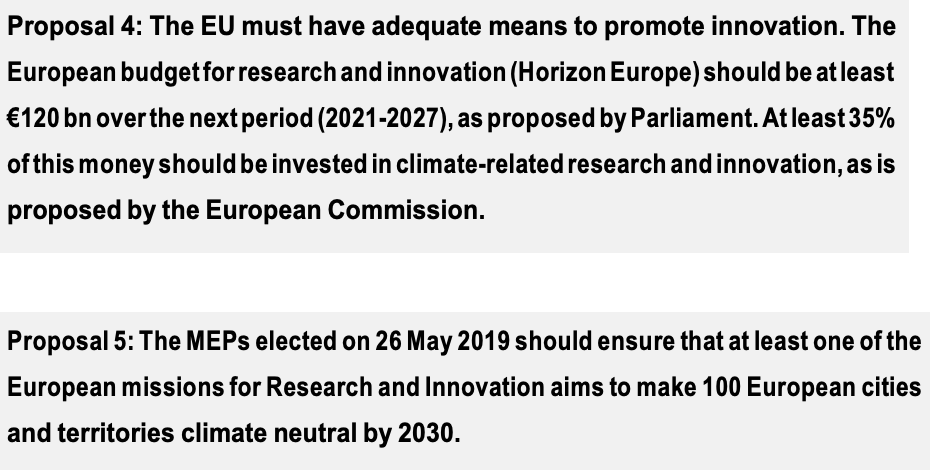
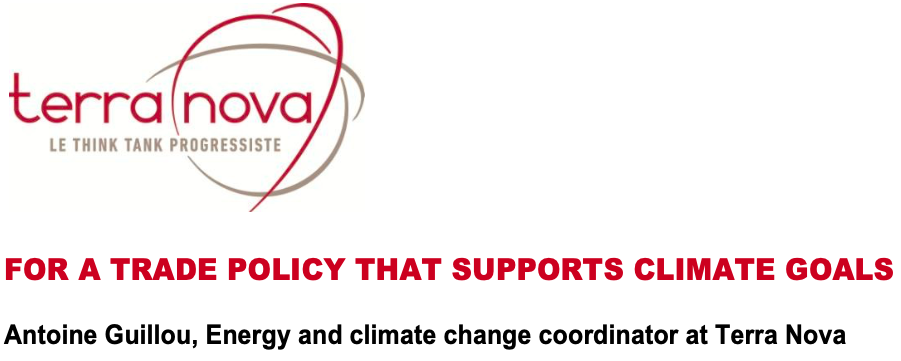
The European Union wants to be at the forefront of the fight against climate change at the global level. To achieve this, it has set significant objectives for the reduction of greenhouse gas emissions, both at European level and in terms of its international commitments. However, it has not yet succeeded in fully aligning its actions with its objectives. The fight against climate change is still too often considered as one sectoral policy among others, and therefore subject to inevitable compromises between institutions and between member states, and confined to limited fields of action and instruments.
However, ecological transition requires us to integrate climate imperatives into all public policies. If there is an area in which the EU has so far been particularly slow to take climate change issues into account, even though it has exclusive jurisdiction, it is trade policy.
And yet a strong link between climate policy and trade policy is essential at two levels.
At the European level, to effectively increase the greenhouse gas emission reduction targets applied to industry requires fair competition to be maintained between European companies subject to regulations or taxation relating to emissions, and their competitors located in other regions of the world, who are exempt. Failure to do so could encourage the relocation of CO2 emitting activities to regions where they are not taxed or regulated, with very damaging effects for both the economy and the environment. Since any attempt at uniform prices or regulation of CO2 emissions on a global scale is politically utopian on the short and medium term, another path must be found.
At the global level, refusing to take into account the carbon impact of imports is tantamount to simply shifting the problem to other regions of the world: by way of illustration, the average French person’s carbon footprint is 12 tons of CO2/year, of which only 7 correspond to emissions in France, and the other 5 to the carbon impact of imported products4. This is particularly true for France because of its high trade deficit, but the carbon footprint for the EU as a whole remains substantial: estimates vary according to the method used, but emissions related to production on European soil are considered to represent approximately 3.5 billion tonnes per year, while emissions attributable to imports represent between 500 million and 1 billion tonnes per year.5 The EU’s trade policy must be viewed not only as a means of economic development but also as an instrument of power. The EU’s economic weight, as the largest trading block in the world, should be used to promote climate regulation and social justice.
What actions can be taken? To cope with unfair competition, the idea of a “carbon border tax,” which would tax the carbon content of imported goods in the same proportions as equivalent items produced within the EU, thereby maintaining competitiveness, is certainly attractive. However, in the strict sense of a tax on the carbon footprint of a given product, such a measure would prove very complex, if not impossible to implement in technical terms, given the difficulty of ensuring the identification and complete traceability of imported products and all their components, which can be numerous. But in a broader context of measures against environmental dumping, concrete and applicable solutions can be put forward. A system of “low-carbon certification” for companies (on a similar principle to ISO certification) could be simpler to implement than a border adjustment (in other words a carbon tax) linked to each product. The certification requirement would apply to both European companies and to any third-party company wishing to export its products to the European Union, thereby restoring a fairer, more climate friendly competitive environment. Such an approach would not be incompatible with international trade rules (WTO and GATT) if these conditions for entry to the European market are applied indiscriminately to all goods, whether they are produced within or outside of the EU.

These minimum standards would be defined on the basis of sectoral benchmarks, i.e. comparisons between the emissions of a given company and emissions of companies in the same sector. This approach would prohibit the trade of products from the least virtuous companies compared to their peers.
In connection with the necessary development of strategies for sectoral decarbonization for each branch of industry, the European Commission could also publish these sectoral benchmarks, in order to highlight the most virtuous companies and conversely to identify those who have not made appropriate efforts, on the “name and shame” principle.

Which already exist today, since they are used for another purpose, namely the allocation of free allowances.
In addition to this publication, to give companies that export to the European market a financial incentive to do better than the minimum standards, border adjustment measures should then be introduced, combined with a reform of the European Union Emissions Trading System.
This reform would entail both the end of free allocations of allowances to European companies subject to international competition and the obligation for foreign companies to also buy allowances for products they export to the European market. It would be possible to calculate the number of allowances due, again, thanks to sectoral benchmarks6. They would be defined in such a way as not to unduly penalise foreign companies in relation to European ones, so as not to risk non-compliance with international trade rules.

These three proposals would allow the EU to be more ambitious in the fight against climate change and to increase its targets for the reduction of greenhouse gas emissions, by removing the risk of carbon leakage.
However, to go further and enable the EU to use its economic weight as a tool against climate change, it will not only be necessary to adopt defensive instruments but also to proactively place climate goals at the core of all trade agreements with other countries or regions of the world. The EU-Japan agreement came into force on 1 February 2019 and integrates a reference to the Paris Agreement and minimum environmental standards, but does not provide for progressive raising of these standards. This, however, is an essential element.

The European Union must now take on the role of becoming a real climate regulator, not only at the European scale but globally. Its trade policy must urgently be aligned with this objective.
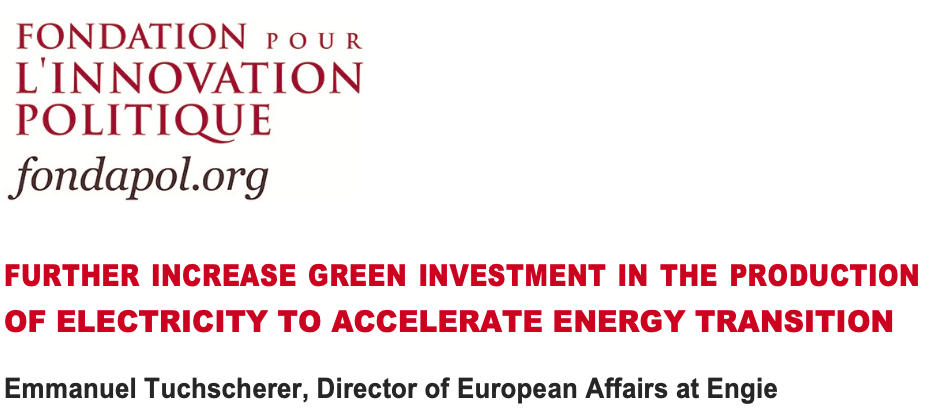
Cf. the new regulation on electricity market design, which will come into force on 1 January 2020.
In 2018, more than 40% of Europe’s electricity was of fossil fuel origin, 45% of which was produced from coal and lignite. CO2 emissions for the production of electricity and heat represent 58% of the total emissions for industries covered by the EU ETS (European Union Emissions Trading System). Rapidly reducing emissions in this sector is a condition for achieving the European objectives for the reduction of greenhouse gas emissions (40% by 2030 and up to 55% if the Climate agenda of the new Commission is fulfilled) and reaching climate neutrality by 2050. Closing coal-fired power stations must be a priority for the EU: it would make it possible to achieve 60% to 70% of the CO2 emissions reduction target by 2030. Its implementation would involve support measures for the most affected regions.
The EU has set the objective of raising production from renewable energy sources to 20% by 2020 and 32% by 2030. To achieve these goals, legal and administrative obstacles will have to be lifted. Furthermore, a genuine European industrial policy must be deployed in this sector to structure procedures, maximize opportunities for economic growth, job creation and regional development, and to stimulate R&D. The intermittent public interventions introduced over the past fifteen years to support the development of renewable energies (wind and photovoltaic energy in particular), combining calls for tenders and public support, have demonstrated their effectiveness at bringing these technologies into the mainstream and achieving appropriate levels of competitiveness. The EU must, however, draw lessons from the excesses of the past to contain costs and avoid windfall effects in the future.
In addition, these public interventions need to be supplemented by an effective organization of the electricity markets in order give economic operators the relevant investment signals regarding means of production, storage and management of demand that are necessary to ensure the security of the supply. In particular, for a successful transition to renewable energy, it will be necessary to ensure the economic viability of schedulable production assets and storage resources, both essential to top-up renewable energy sources on an intermittent basis.
Finally, the issue of the decarbonization of Europe’s electricity supply requires a debate free of ideological bias that considers the merits of each technology. The historic nuclear supply remains a decarbonized solution which offers the advantage of being able to provide substantial baseload energy in a schedulable manner. Natural gas will hold an increasingly important place in the short and medium term to enable flexibility in electricity production and has the potential to be green.
In this context, European energy policy has significant shortcomings, and several reforms will be essential to accelerate green investments in the European electricity production sector while at the same time ensuring the supply’s security.
1. AN INCOMPLETE ORGANIZATION OF THE ELECTRICITY MARKETS
The reform of the European electricity market implemented by the Juncker Commission in the context of the Energy Union7 has certainly improved its operation in the short term, however, it does not guarantee the long-term profitability of investments in new production, storage or demand management capacity, essential to the sector’s decarbonization and the security of the supply for consumers. Member states can now set up capacity markets – i.e. markets that pay production or load management resources for their availability during peak consumption periods – according to specific terms, but European legislation only recognizes them as being of an exceptional or temporary nature. This regulatory framework is not suited to electricity production based on renewable energies, that combines high upfront investment requirements and electricity production at marginal or almost zero cost, and which must guarantee the reliability of the supply.

In particular, this is a matter of securing capacity markets implemented in a number of member states, including France since 2017, on a legal and policy basis, to ensure the maintenance on the market of generation, storage and demand management capacities, and allow new low-carbon investments. However, these mechanisms are transitional solutions and the next Commission should quickly launch a review of the future market model, suited to a world of large-scale renewable electricity production and increasingly interconnected systems (e.g. the role of gas in the production of electricity, hydrogen and power-to-gas). This world is not far away: the objective of 32% renewable energy by 2030 requires the incorporation of a minimum of 60-65% of electricity of renewable origin in the electricity system by this deadline.
2. A LACK OF COORDINATION BETWEEN NATIONAL ENERGY POLICIES
The fragility of this regulatory framework is exacerbated in a context in which the energy policies of member states currently include the removal of substantial quantities of electricity production capacity, notably in Western Europe (gradual phasing out of coal in Germany, the Netherlands, Italy, and Spain, phasing out of nuclear in Germany and Belgium). Approximately 90 GW of baseload capacity by 2030 will thus be removed from the system in the next few years in Central Western Europe8. These capacities will have to be wholly or partly replaced to ensure supply security. The latter could be compromised if appropriate conditions for investment in new production capacity are not provided. Moreover, decisions relating to the sizing of generation needs are taken by each member state without coordination at the European level, and without a precise review of the supply- demand balance at peak consumption periods being available.

While the choice of energy mix remains a matter for member states, it has become urgent, in increasingly interconnected electricity markets9, to set up European policy coordination

While the choice of energy mix remains a matter for member states, it has become urgent, in increasingly interconnected electricity markets9, to set up European policy coordination mechanisms. Respecting national prerogatives and composed of representatives of member states and European institutions, the energy policy committee’s mission would be to review the consequences of national policies on supply security and to oversee cross- border investment strategies in transport infrastructure and production capacities. In the longer term, this would progress to a more extensive integration of energy policies in the context of an “Act 2 ” of the Energy Union.
2. A CARBON MARKET UNSUITED TO THE ISSUES FACING THE ELECTRICITY PRODUCTION SECTOR
The European carbon market created in 2005 has not played the role expected in the reduction of CO2 emissions in Europe. Successive reforms have not been able to completely correct the defects in its initial design (rigidity with regard to changes in demand). These have been hampered by widespread resistance (from the manufacturing sector, especially energy-intensive activities, and from industries and countries highly dependent on fossil fuels). As a result, while the price per tonne of CO2 has recovered in recent months and is now around 25 Euros, its level is still insufficient to secure shifts in technology (from coal to low-carbon energy sources) and accelerate the green investment that the EU needs to achieve its objectives. The challenge has been taken up through national policies (fixing of a carbon floor price by the United Kingdom in 2013, decisions to phase out coal in a dozen member states, subsidies for renewable energies, energy efficiency obligations), but these measures have several disadvantages: the renationalisation of energy policy, depressive effects on the price of EUAs, additional costs and less budgetary resources to finance energy transition
To accelerate the decarbonization of the electricity sector and stimulate new green investment, a CO2 floor price should be applied to electricity production. Initially within a range of 25 to 30 euros, it could then be raised gradually and in accordance with CO2 price signals in sectors not covered by the EU ETS (buildings, transport). Ideally, this minimum price would be introduced into the European Union Emissions Trading System shared by the EU 27. Otherwise, it could be promoted in a vanguard of member states wishing to strengthen their commitments to climate change. All revenues generated would be used to fund energy transition and social support measures.







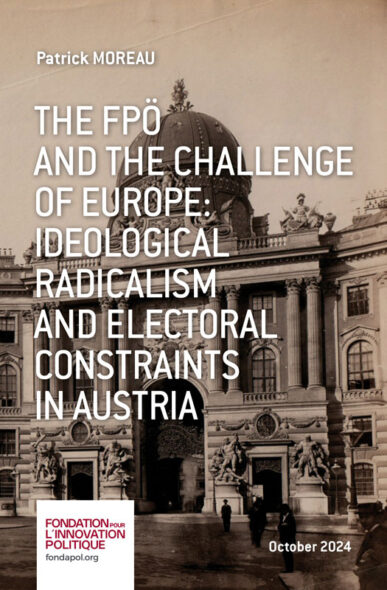

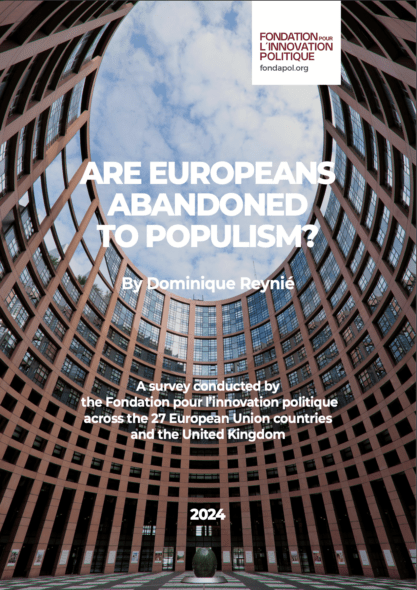
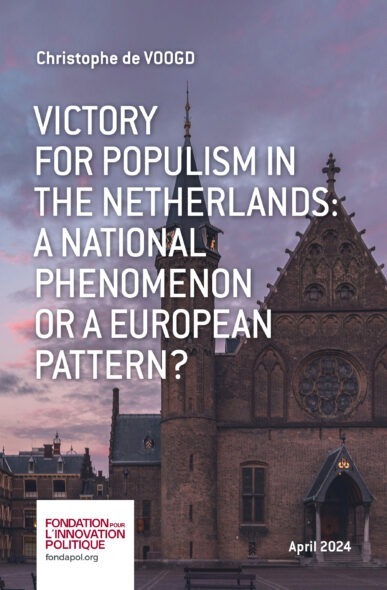



No comments.